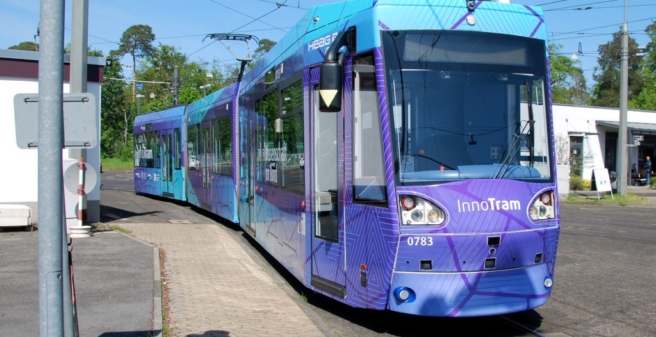
On 3 May 2023, Darmstadt’s public transport company HEAG invited representatives of regional politics and the local transport press to a remarkable event at its depot in the Eberstadt district. A tram was presented which, thanks to driver assistance systems, is able to travel at least partially autonomously.
The test vehicle is HEAG’s railcar 0783, a 16-year-old eight-axle double-articulated low-floor railcar for single-floor operation made by Bombardier (since 2021 Alstom) in 2007. The delivery series comprises a total of 18 railcars with the operating numbers 0775 to 0792.
Tramcar 0783 has already been running on HEAG’s rail lines since 2019 as part of the MAAS project. MAAS stands for “Feasibility study on automation and assistance systems for trams.” It has been equipped with cameras and sensors and has since been collecting data during HEAG’s normal line operations. Its purpose is to answer the question of how advancing digitalisation can support public transport by rail. Or as HEAG puts it in its press release: “What will tram transport of the future look like?”
In her welcoming address, HEAG Managing Director Ann-Kristina Natus said: “The demands on our driving personnel are increasing. Against this background, we asked ourselves how we can support our employees even better.”
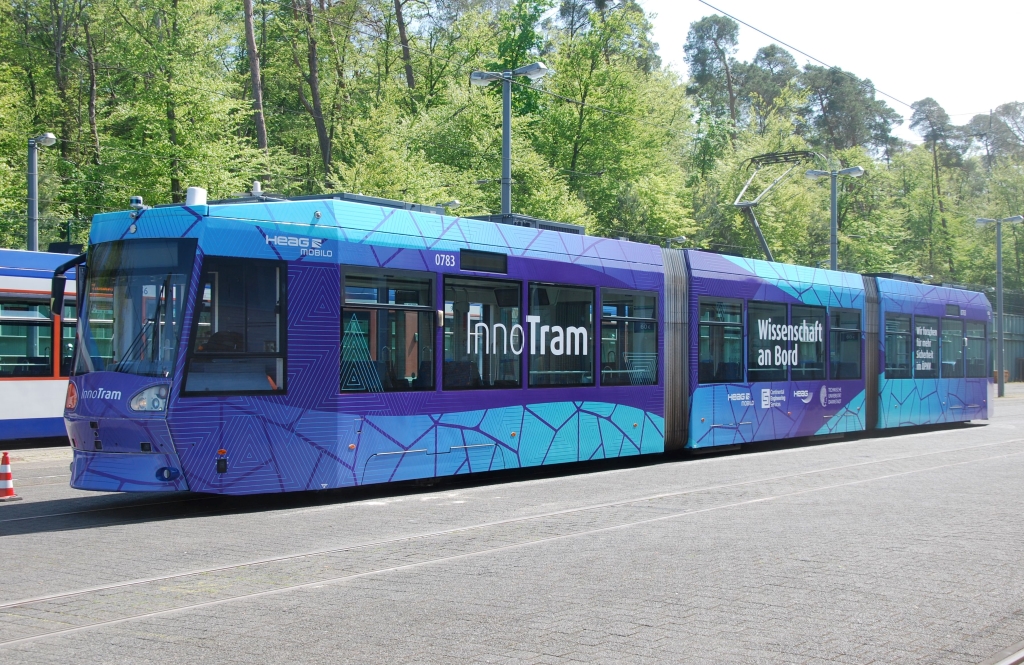
New assistance systems and teleoperated driving
The train has been equipped with assistance systems that have long been known from the automotive industry and have long proven their worth there. For example, with a brake assistant that automatically stops the train as soon as the sensors and cameras detect an obstacle on the tracks. The fact that this works with emergency braking to an absolute standstill was demonstrated with the dummy of a car that suddenly appeared in front of the train. And it stood reliably, with sufficient safety distance to that “car”. The brake assistant has proven itself so well that it is already installed as standard in the latest HEAG trams.
Tram 0783 also has the Side-Guard-Assist, long known from the automotive industry, which detects whether there is a cyclist, a pedestrian or a car in the blind spot next to the tram. Here, too, the lane is braked before an accident occurs. The following situation was described as an example: a car is driving to the right of the lane. It accelerates in order to turn across the tracks before the train. This was said to be a relatively common cause of accidents in tram traffic. But the Side-Guard-Assist stops the tram and prevents the accident from happening.
The Side-Guard-Assist has another beneficial effect: there is no flanking between two trams. The Side-Guard-Assist was developed in cooperation with the “Continental Engineering Company”. Continental, isn’t that the tyre manufacturer from Hanover? But the Continental employee said at the presentation: “We have long been able to do more than just tyres.”
Thanks to the cameras and sensors, the train can also drive “teleoperated”. In other words, there is no driver on board, the railcar is driven from an operating station outside the train. This was also demonstrated during the presentation, tram no. 0783 made rounds in the depot without anyone being in the driver’s cab.
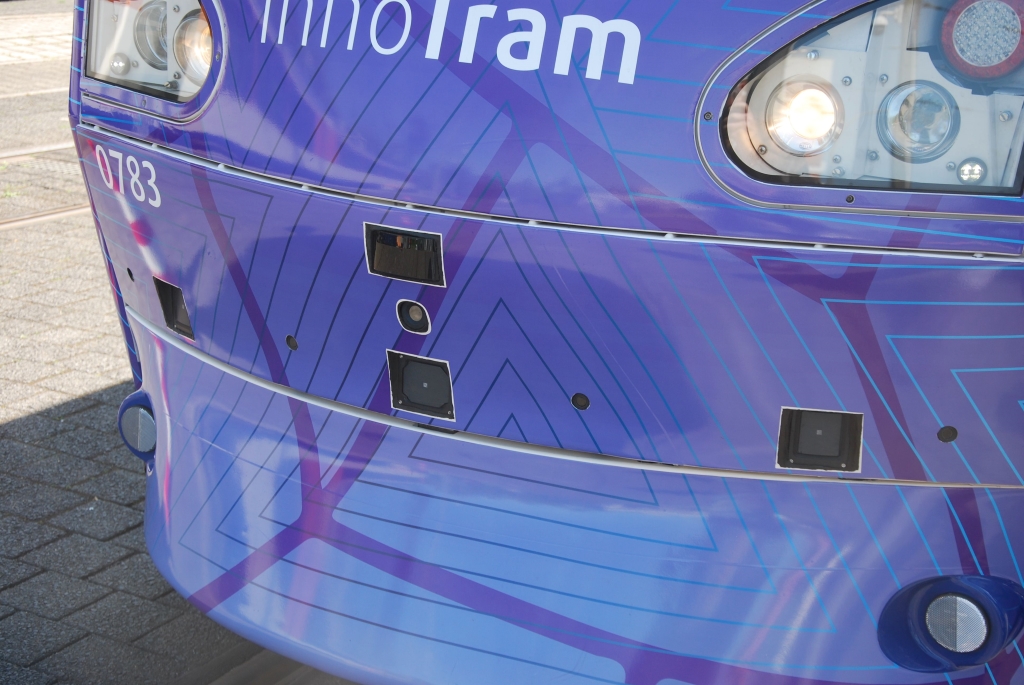
Here, however, one weakness of teleoperated driving is still apparent: it is simply not yet permitted in public transport areas. Compared to a car, truck or bus, the braking distances of a train are too long, cameras and sensors would have to be able to “look ahead” accordingly, and the risk would be too great that an obstacle would still get in the way before the train reaches the foreseen point. So teleoperated driving has so far only been possible for shunting operations in the depot – the technology is not yet any further advanced.
Question: can at least one employee operate several trains remotely? But no, that’s not possible either. The employee at the remote control station has to concentrate entirely on the train he is currently driving.
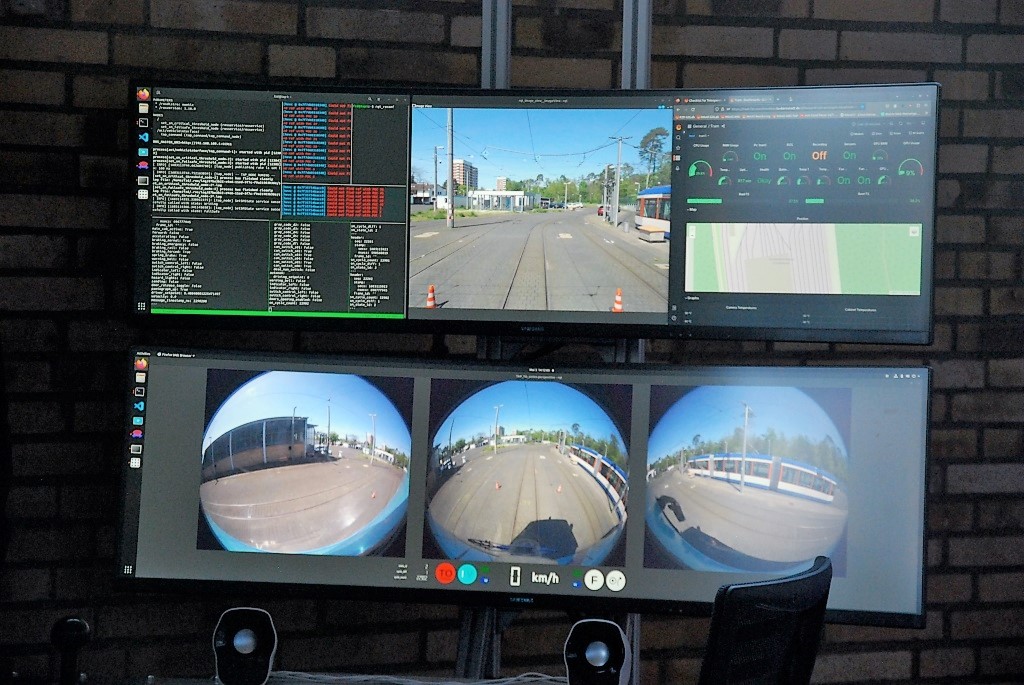
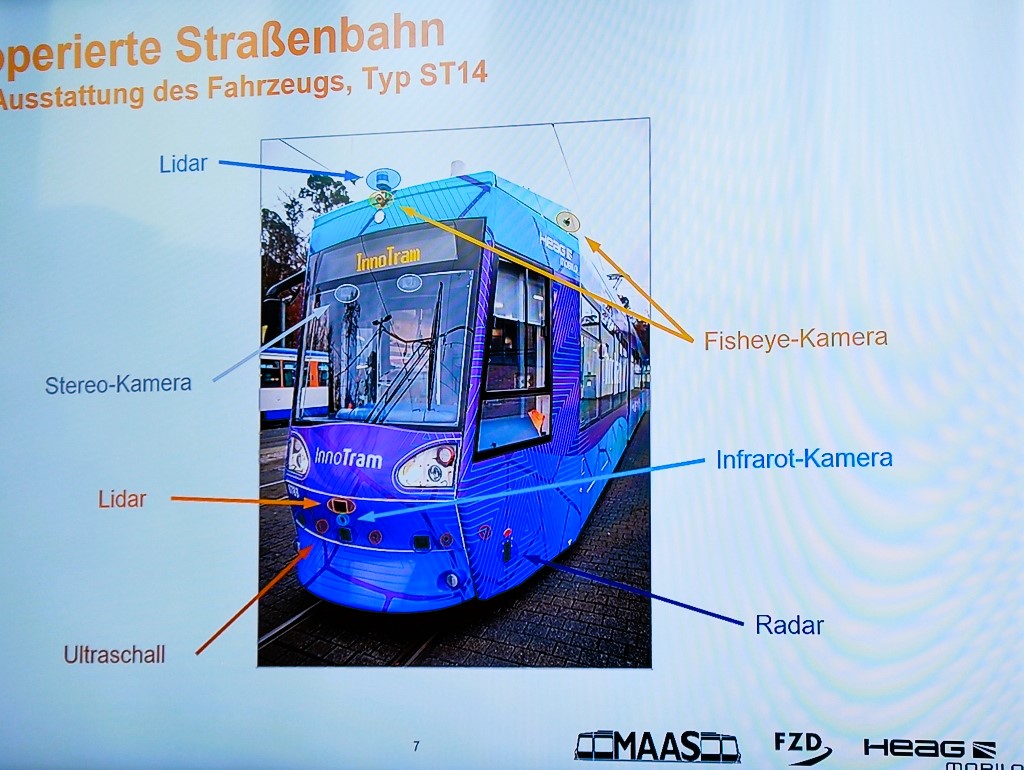
Equipping the tramcar for operation with the driver assistants
For use with the driver assistants and in remote-controlled operation, tram 0783 has been equipped with numerous lidars, radars, cameras of various systems and an ultrasound device. On the edge of the roof above the windscreen there is a “normal” camera, which is responsible for looking about 100 metres in front of the track in order to detect obstacles at an early stage. The immediate surroundings are observed by “fisheye cameras” with extreme wide-angle lenses that show what is happening in the immediate vicinity of the track. Stereo cameras piece together a detailed image, an infrared camera reacts in the dark to heat signals emanating from a possible obstacle. Ultrasound is reflected by possible obstacles. And lidars and radars detect the track.
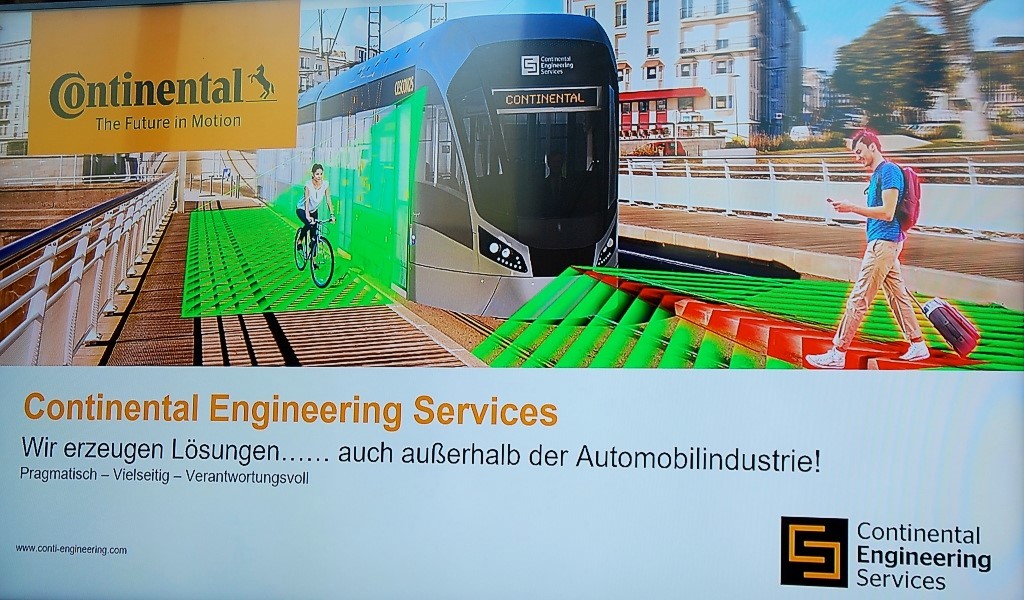
The project partners
The MAAS project was and is technically and scientifically supported and operated by the city of Darmstadt, its transport operator HEAG, the Technical University of Darmstadt (Department FZD = “FahrZeugtechnik Darmstadt”), Alstom as well as Deutsche Telekom and Continental Engineering Company. In the greetings, it was said that especially two employees each of the FZD of the Technical University and the HEAG did not let up when problems arose.
MAAS becomes InnoTram
The tests and trials with no. 0783 will of course continue. The tram has now been given the new name InnoTram. It will be equipped with further assistance systems. For example, a “head-up display” plays information about the train on the inside of the windscreen, which the driver can read without having to take his eyes off the track ahead.
Conclusion
At the presentation on 3 May, the railway impressively demonstrated that the use of driver assistance systems on a tram is very much possible and works. And that a tram can also be remote-controlled in the depot without any problems. Here, the railway has learned from the bus, which has been familiar with assistance systems for a few years. And which – for example in Skövde near Gothenburg and in Paris – also drives completely on its own to its parking space in the depot. The driver arrives in the yard (already today) with the bus, gets out, and the bus heads for its parking position all by itself.
Unlike the bus, a train will probably not be able to travel completely autonomously in traffic in just a few years. It is too difficult to solve the problems that a train has too long a braking distance and – due to the rails – cannot swerve “quickly”. Quote from the presentation: “If the SUV in front of the bakery protrudes into the profile of the train, the driver can get out, go into the bakery and ask the SUV to move to the side. And with an autonomous lane, who will tell the bakery?”
09.05.2023
